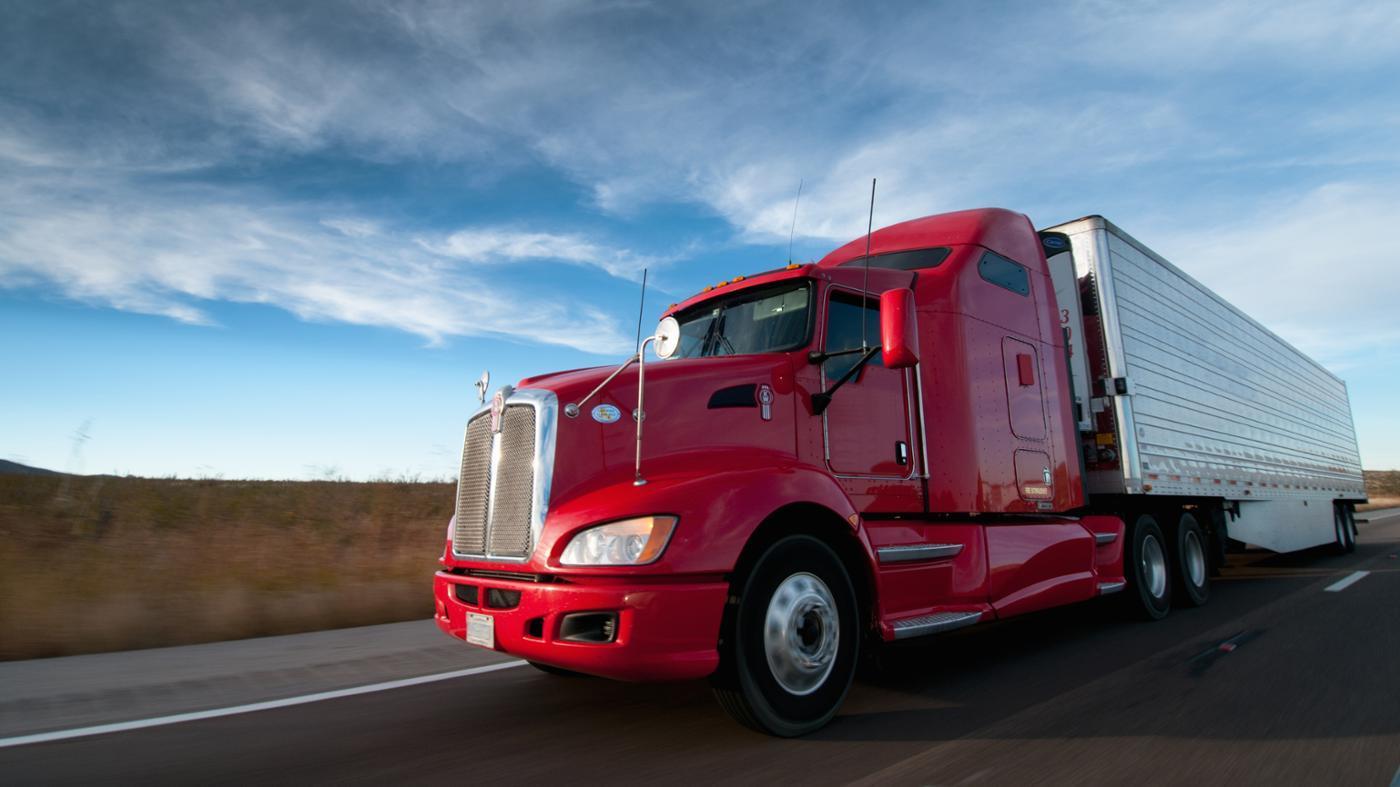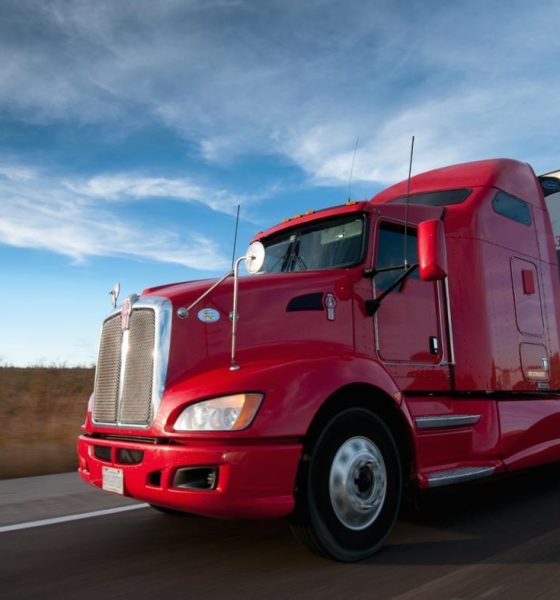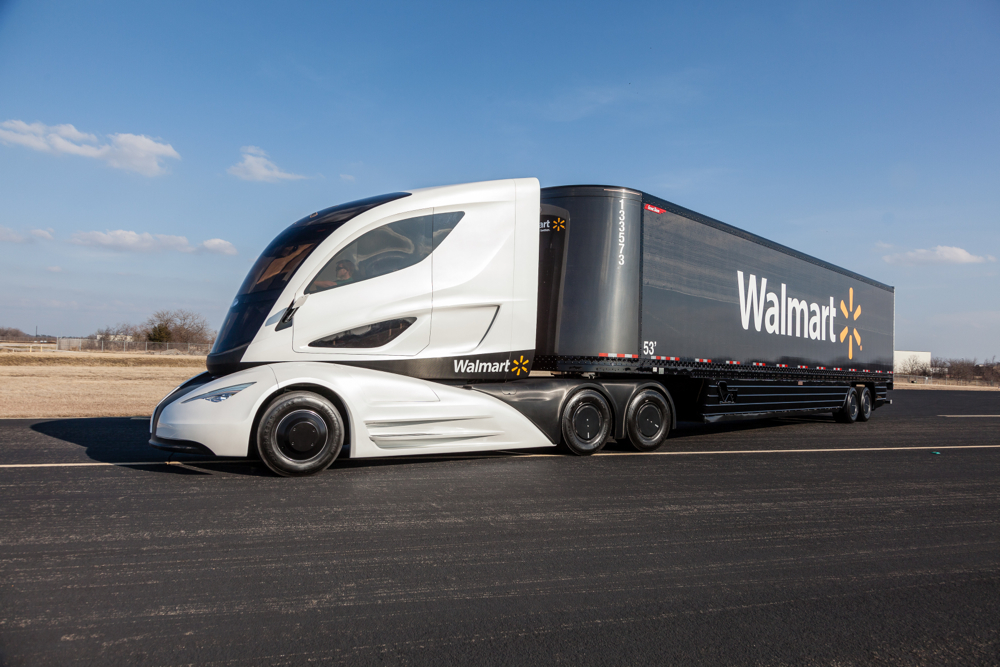

News
Solving the Tesla Semi truck conundrum: here’s what it might take
With the release of Tesla’s updated vision for the future, CEO Elon Musk included plenty of information that was both intriguing and light on details. From that, we will try to make a guess as to what Tesla’s plans are in reference to trucks and shed light on the many obstacles that the company will need to overcome before making its plans a reality.
The light details of Musk’s announcement is par for the course from Tesla and Co, which operates its marketing as much on hype and viral sharing as anything else. This is not a knock against the company, as most other firms would sacrifice virgins every Friday to see the same kind of unsolicited viral marketing that Tesla generates. One thing Elon has mastered is walking the fine line between being informative and forthcoming and being vague enough to cause rampant speculation.
In the company’s “Part Deux” plans for the future, a brief and almost passing mention of semi-trucks was made as a part of Tesla’s developments. Specifically, Must referred to “heavy-duty trucks” and called the idea a “Tesla Semi.” This can imply two things, but probably implies both. It could imply that Tesla plans to make a heavy-duty truck – which could mean a three-quarter ton pickup truck, a Class B heavy truck, or a large Class A freight-hauling truck. Or it can imply that Tesla plans to make a semi-truck only (aka “18 wheeler”). We believe it’s likely that they plan to do all of the above.
Currently, about 70 percent of the freight being moved around the United States is moved on semi-trucks in which a large tractor is attached to a separate trailer. These trucks typically operate at weights up to 80,000 pounds in vehicle, freight, and fuel. They are referred to as “Class A” trucks because the weight class requires an operator’s license of that type. Yet that is only one class of truck. And the typical over-the-road (OTR) truck we usually think of when talking about semi-trucks are just one slice of a large trucking pie.
Nearly 12,000 million tons of freight are hauled by trucks every year in the United States. A significant portion of that hauling is done by smaller trucks rather than large semi-trucks. Package carrying (van) trucks, dump trucks, refuse (garbage) trucks, and other specialized trucks are also common and actually make up a larger portion of the miles driven by heavy-duty trucking. Most of these vehicles have a gross weight of 26,000 pounds or more, by definition, so for our purposes here we will be excluding passenger-style heavy-duty pickups and the like. We are assuming that Musk is referring to freight hauling, given his statements.
With the plan to “cover the major forms of terrestrial transport” that Tesla put forth, we can assume that the company plans to design and potentially build heavy-duty trucks of all stripes. This is realistic given that major truck builders such as Paccar (Kenworth, Peterbilt), Volvo, Mack, etc. already do this. One basic design can be modified to match several needs, thus a single model Mack truck can be both an OTR freight puller and a dump truck with just a few changes to the drivetrain and chassis. Medium-duty trucks, such as package delivery (ala UPS, FedEx) box trucks can also be of a single design with multiple body options. Although the reality is a bit more complicated than this, the gist is that it is possible to design only a couple of vehicles and have them workable in most major truck markets. Knowing this, we will concentrate on the most difficult to achieve, over-the-road heavy-duty semi-trucks.
Knowing that, there are obstacles to overcome. The challenges of a Tesla pickup truck are a beginning, but with a heavy freight hauler, they become exponential. Here are some basic requirements for the biggest of these HD trucks:
- Power output similar to a large diesel engine, equalling roughly 450-550 horsepower and 800-1,200 pound-feet of torque. The amount of output depends heavily on the work to be done. A typical OTR truck, for example, falls in the lower end of this spectrum to maximize fuel efficiency while a typical off-road construction or heavy-load truck (logging and the like) will be at the higher end.
- An operating range of 600 miles per charge for OTR and about half that for more local use (construction, large trailer/freight delivery). Smaller trucks doing package deliveries could operate in the 150-mile range easily.
- The capability to haul as much or more freight than the current diesel-powered offerings do.
That last point is important. Getting a 600-mile range for a truck that can weigh up to 80,000 pounds, freight included, is pretty simple. Getting a 600-mile range for a truck and trailer weighing under 35,000 pounds is not as easy. It’s the old problem of more batteries equals more range, but also equals more weight.
There have been and are current attempts at electrifying semi-trucks, of course. Mostly in the medium-duty package delivery and trailer moving (non-transport) sectors. Solutions involving hydrogen fuel cells, battery-electrics, hydraulic hybrids, and more have been produced. Some did not do well (see Smith Transport) and some are going places (see Parker-Hannifin’s hydraulic hybrids). For the most part, battery-electric over-the-road trucks are seen as a pipe dream by most in the industry. There are good reasons for this. Not the least of which are the battery weight and range expectations of the trucks. Nevermind the likely long charging times required.
Without getting too detailed, most OTR drivers expect to put in 600 or more miles per day in a solo run (one driver) and about 1,000 or so when team driving. Most fuel stops are 15-20 minutes and most trucks have a range of 700-1,000 miles when fitted with dual tanks (one on either side). Having enough lithium-ion batteries on board to do that is daunting. Especially given the high power outputs required to move 80,000 pounds worth of rig and freight.
There are solutions for this, of course. Since Musk devoted so much of his announcement to autonomous driving, we can assume the plan is to include that with trucking. Three possible ideas are:
Relaying. A truck takes a trailer 300-400 miles, swaps it with a trailer going back where it came from, and returns. The trailer swapped continues on with on another truck for another 300-400 miles, then another, and another.. Until its final destination and delivery. This is currently done with certain types of freight and these trucks often have shorter trailers and run them as doubles (one attached to another). Automating this might be a solution. At least for some types of freight.
Battery swapping. The truck drives for a certain range of miles, stops somewhere to have its emptied battery swapped with a full one, and continues. If done in 10-15 minutes and not more than twice a day, this would be realistic under the current trucking paradigm with a driver on board. When automated, the swaps could be as often as you’d like, though each stop means delays in shipment.
Partial electrification. This would be a truck which runs on electricity but has an on-board combustion generator. This is a potential solution, but is not likely to be on Tesla’s agenda.
Another option that should be considered, though it might not be what Tesla fans will want to hear: Musk may be planning on taking a standard semi-truck and automating it. In other words, the Tesla Semi could actually be an automation system, not an actual truck. At least in the beginning. Given the huge amount of technical obstacles, some of which may not be surmountable without combustion, this is a viable guess. At least for OTR trucks.
Any of these ideas or a combination are realistic for a Tesla Semi strategy in regards to OTR trucks. There are no shortage of plans (grandiose and otherwise) for transforming the trucking industry via electrification. Seeing Teslas will at least be interesting.

Elon Musk
Tesla AI Head says future FSD feature has already partially shipped

Tesla’s Head of AI, Ashok Elluswamy, says that something that was expected with version 14.3 of the company’s Full Self-Driving platform has already partially shipped with the current build of version 14.2.
Tesla and CEO Elon Musk have teased on several occasions that reasoning will be a big piece of future Full Self-Driving builds, helping bring forth the “sentient” narrative that the company has pushed for these more advanced FSD versions.
Back in October on the Q3 Earnings Call, Musk said:
“With reasoning, it’s literally going to think about which parking spot to pick. It’ll drop you off at the entrance of the store, then go find a parking spot. It’s going to spot empty spots much better than a human. It’s going to use reasoning to solve things.”
Musk said in the same month:
“By v14.3, your car will feel like it is sentient.”
Amazingly, Tesla Full Self-Driving v14.2.2.2, which is the most recent iteration released, is very close to this sentient feeling. However, there are more things that need to be improved, and logic appears to be in the future plans to help with decision-making in general, alongside other refinements and features.
On Thursday evening, Elluswamy revealed that some of the reasoning features have already been rolled out, confirming that it has been added to navigation route changes during construction, as well as with parking options.
He added that “more and more reasoning will ship in Q1.”
🚨 Tesla’s Ashok Elluswamy reveals Nav decisions when encountering construction and parking options contain “some elements of reasoning”
More uses of reasoning will be shipped later this quarter, a big tidbit of info as we wait v14.3 https://t.co/jty8llgsKM
— TESLARATI (@Teslarati) January 9, 2026
Interestingly, parking improvements were hinted at being added in the initial rollout of v14.2 several months ago. These had not rolled out to vehicles quite yet, as they were listed under the future improvements portion of the release notes, but it appears things have already started to make their way to cars in a limited fashion.
Tesla Full Self-Driving v14.2 – Full Review, the Good and the Bad
As reasoning is more involved in more of the Full Self-Driving suite, it is likely we will see cars make better decisions in terms of routing and navigation, which is a big complaint of many owners (including me).
Additionally, the operation as a whole should be smoother and more comfortable to owners, which is hard to believe considering how good it is already. Nevertheless, there are absolutely improvements that need to be made before Tesla can introduce completely unsupervised FSD.
Elon Musk
Tesla’s Elon Musk: 10 billion miles needed for safe Unsupervised FSD
As per the CEO, roughly 10 billion miles of training data are required due to reality’s “super long tail of complexity.”

Tesla CEO Elon Musk has provided an updated estimate for the training data needed to achieve truly safe unsupervised Full Self-Driving (FSD).
As per the CEO, roughly 10 billion miles of training data are required due to reality’s “super long tail of complexity.”
10 billion miles of training data
Musk comment came as a reply to Apple and Rivian alum Paul Beisel, who posted an analysis on X about the gap between tech demonstrations and real-world products. In his post, Beisel highlighted Tesla’s data-driven lead in autonomy, and he also argued that it would not be easy for rivals to become a legitimate competitor to FSD quickly.
“The notion that someone can ‘catch up’ to this problem primarily through simulation and limited on-road exposure strikes me as deeply naive. This is not a demo problem. It is a scale, data, and iteration problem— and Tesla is already far, far down that road while others are just getting started,” Beisel wrote.
Musk responded to Beisel’s post, stating that “Roughly 10 billion miles of training data is needed to achieve safe unsupervised self-driving. Reality has a super long tail of complexity.” This is quite interesting considering that in his Master Plan Part Deux, Elon Musk estimated that worldwide regulatory approval for autonomous driving would require around 6 billion miles.
FSD’s total training miles
As 2025 came to a close, Tesla community members observed that FSD was already nearing 7 billion miles driven, with over 2.5 billion miles being from inner city roads. The 7-billion-mile mark was passed just a few days later. This suggests that Tesla is likely the company today with the most training data for its autonomous driving program.
The difficulties of achieving autonomy were referenced by Elon Musk recently, when he commented on Nvidia’s Alpamayo program. As per Musk, “they will find that it’s easy to get to 99% and then super hard to solve the long tail of the distribution.” These sentiments were echoed by Tesla VP for AI software Ashok Elluswamy, who also noted on X that “the long tail is sooo long, that most people can’t grasp it.”
News
Tesla earns top honors at MotorTrend’s SDV Innovator Awards
MotorTrend’s SDV Awards were presented during CES 2026 in Las Vegas.

Tesla emerged as one of the most recognized automakers at MotorTrend’s 2026 Software-Defined Vehicle (SDV) Innovator Awards.
As could be seen in a press release from the publication, two key Tesla employees were honored for their work on AI, autonomy, and vehicle software. MotorTrend’s SDV Awards were presented during CES 2026 in Las Vegas.
Tesla leaders and engineers recognized
The fourth annual SDV Innovator Awards celebrate pioneers and experts who are pushing the automotive industry deeper into software-driven development. Among the most notable honorees for this year was Ashok Elluswamy, Tesla’s Vice President of AI Software, who received a Pioneer Award for his role in advancing artificial intelligence and autonomy across the company’s vehicle lineup.
Tesla also secured recognition in the Expert category, with Lawson Fulton, a staff Autopilot machine learning engineer, honored for his contributions to Tesla’s driver-assistance and autonomous systems.
Tesla’s software-first strategy
While automakers like General Motors, Ford, and Rivian also received recognition, Tesla’s multiple awards stood out given the company’s outsized role in popularizing software-defined vehicles over the past decade. From frequent OTA updates to its data-driven approach to autonomy, Tesla has consistently treated vehicles as evolving software platforms rather than static products.
This has made Tesla’s vehicles very unique in their respective sectors, as they are arguably the only cars that objectively get better over time. This is especially true for vehicles that are loaded with the company’s Full Self-Driving system, which are getting progressively more intelligent and autonomous over time. The majority of Tesla’s updates to its vehicles are free as well, which is very much appreciated by customers worldwide.









